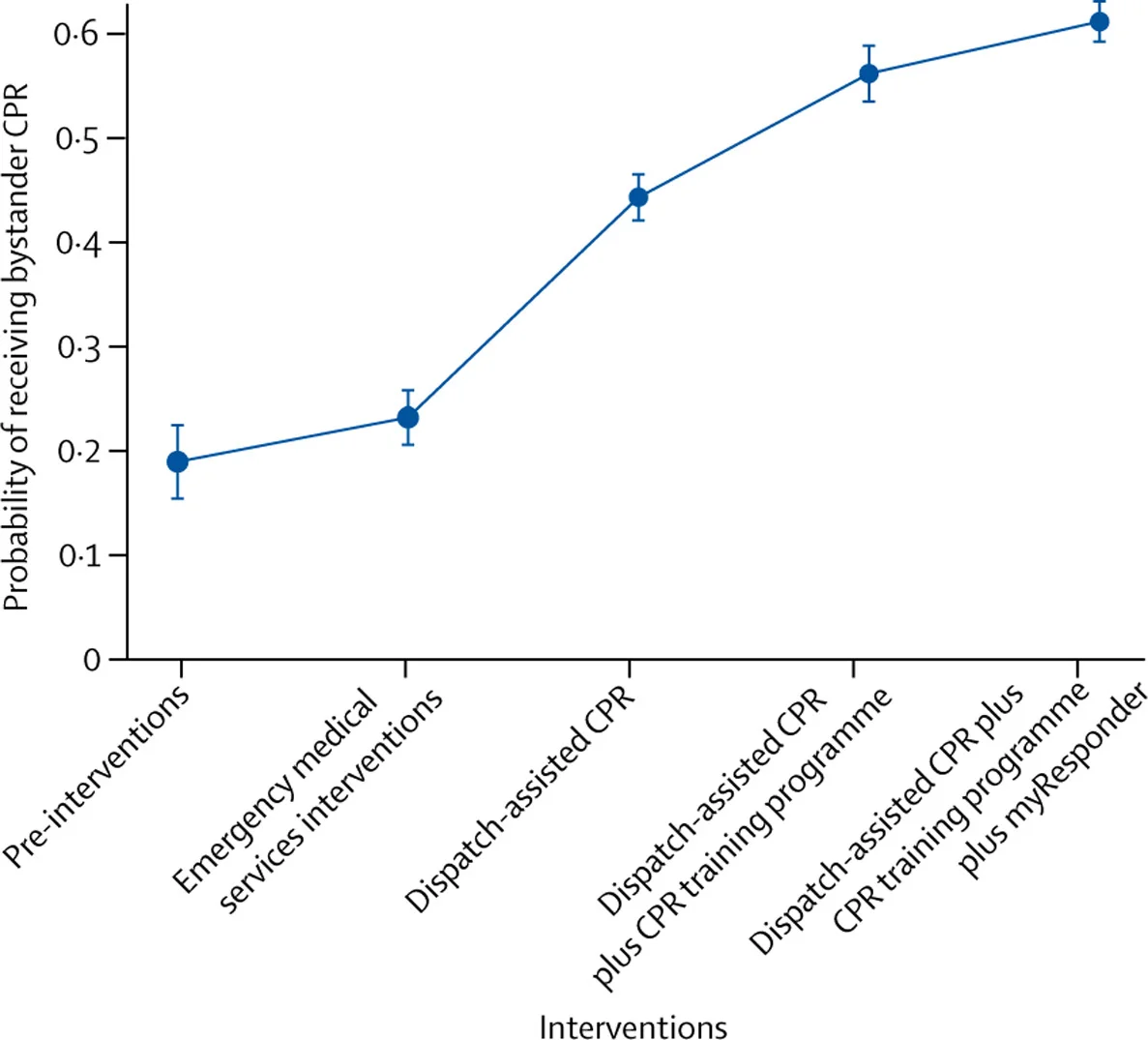CPR refers to an emergency procedure resuscitating a cardiac arrest by achieving normal breathing and blood circulation in an unconscious person whose heart stops or is unable to function accordingly. This procedure involves rescue breathing along with chest compressions aimed at activating various body functions of a person whose heart has stopped beating.
Quick and effective procedures for CPR may save lives in critical moments. This guide will take you through critical steps of CPR, enlighten the importance of early stages of intervention, and give some insight into best practice.
What is the Importance of CPR?
Cardiac arrest is a medical condition in which the heart suddenly stops pumping blood to the rest of the body. It can occur at any age and without warning. The prime goal of CPR is continuation of oxygenated blood flow to the vital organs, such as the brain and heart. Such prompt intervention would be helpful due to anoxia in which, even after four or six minutes, the brain may suffer damage followed by death shortly.
According to American Heart Association figures, about 475,000 people die from cardiac arrest in the U.S. annually. However, effective CPR would probably provide much better survival rates. For every minute without CPR, chances of survival decrease by 7-10%, but early CPR can double or triple chances in some cases.

Source: The Lancet
When Should You Perform CPR?
Recognizing when CPR is necessary is the first step in administering help. CPR is needed when an individual is:
- Unresponsive and not breathing or not breathing normally (gasping for air).
- In cardiac arrest, where the heart stops beating, causing the person to collapse and lose consciousness.
- Drowning, choking, or experiencing a drug overdose that results in the cessation of breathing.
The Step-by-Step Process of CPR
- Ensure Safety First
Before starting CPR, it’s essential to ensure the environment is safe for you and the victim. If the situation is dangerous (e.g., a fire, busy road, or electrical hazard), move the person to a safer location if possible without risking your safety.
- Check for Responsiveness
Gently shake the person and shout, “Are you okay?” If there’s no response, they may need immediate assistance. Time is critical, so don’t delay this initial assessment.
- Call for Emergency Help
Once you have made sure that the person is unconscious, dial emergency services. In most countries, an emergency number is 911; however, know the local number, if different. If there are others present, ask someone to call while you begin CPR.
If you are alone and you have access to a cell phone, you should use the speaker mode to call for help while continuing CPR. The dispatcher will probably give you further instructions as you progress.
- Begin Chest Compressions
Chest compressions are the most critical part of CPR. They help maintain blood flow to the brain and heart.
- Positioning: Kneel beside the person. Place the heel of one hand in the center of the chest (on the lower half of the breastbone, or sternum). Place your other hand on top of the first, interlocking your fingers.
- Compression Depth and Rate: Push hard and fast, compressing the chest at least 2 inches deep. The recommended rate is 100-120 compressions per minute. Allow the chest to fully recoil between compressions, as this helps the heart refill with blood.
- Rhythm: A helpful tip for maintaining the right rhythm is to perform compressions to the beat of songs like “Stayin’ Alive” by the Bee Gees or “Row, Row, Row Your Boat.”
Compressions are physically demanding, but they are vital to keeping blood circulation going until professional help arrives.
- Rescue Breaths (Optional for Laypersons)
Rescue breathing involves giving breaths through the person’s mouth to provide oxygen. If you are trained in CPR, combine chest compressions with rescue breaths, but if you’re untrained or uncomfortable with mouth-to-mouth contact, performing hands-only CPR is still highly effective.
- Airway: Tilt the person’s head back slightly to open the airway. This can be done by lifting the chin and pushing down on the forehead.
- Breathing: Pinch the person’s nose shut, cover their mouth with yours to form a seal, and blow air into the lungs. Each breath should last about one second, enough to make the chest rise. Give two breaths after every 30 chest compressions.
Remember, rescue breaths are not always necessary for CPR to be effective, particularly in out-of-hospital settings where untrained bystanders are present. Hands-only CPR (chest compressions alone) can still save lives.
- Use of an Automated External Defibrillator (AED)
If available, use an AED as soon as possible. An AED is a portable device that can analyze the heart’s rhythm and deliver an electrical shock to restore a normal heartbeat.
- Turn on the AED: Follow the voice prompts from the device. It will instruct you on where to place the adhesive pads on the victim’s bare chest.
- Analyzing: The AED will check the heart’s rhythm and advise whether a shock is needed.
- Deliver the Shock: If a shock is advised, make sure no one is touching the person, then press the shock button. The AED will automatically reassess and guide you through further steps.
Continue CPR after the shock until professional help arrives or the person shows signs of life (e.g., starts breathing normally, moving, or opening their eyes).
- Continue Until Help Arrives or the Person Recovers
You should continue CPR until one of the following occurs:
- The person shows signs of life, such as breathing or movement.
- Medical professionals arrive and take over.
- You are too exhausted to continue.
- An AED becomes available and is ready for use.
CPR is a physically strenuous procedure, so if there are others present, it’s a good idea to rotate every two minutes to ensure compressions remain effective.
CPR for Different People
The steps outlined above apply to adult CPR, but there are some important differences when performing CPR on children and infants:
- Infants (under 1 year): Use two fingers instead of your hands to provide chest compressions, and only press about 1.5 inches deep. For rescue breaths, cover both the infant’s nose and mouth with your mouth, and deliver gentle puffs of air.
- Children (1-8 years): Use one hand for chest compressions, and compress the chest to about 2 inches deep. The ratio of 30 compressions to 2 breaths remains the same.
Training and Certification
A person will be able to respond to any emergencies once equipped with the right skills and self-confidence through certified training courses in learning CPR. Today, there are so many organizations offering certification in CPR, most notably the American Heart Association and the Red Cross. It is in these structured classes that learners can get more hands-on experience, which is very important in mastering the actual correct techniques and understanding how to handle stressful situations.
Some classes are even teaching students how to use AEDs; more and more of these devices are being installed in schools, airports, and shopping malls. It’s amazing how ubiquitous they will be, so learning how to apply one may mean the difference between life and death in a crisis situation.
Conclusion
CPR: an important life-saving skill that can make a critical difference when performing it. So being aware of when to act and doing the appropriate actions of CPR, examining responsiveness, summoning help, giving chest compressions, and if required, using an AED ensures you are ready at the exact time it will be most needed.
Though it seems rather daunting, hands-only CPR by a bystander can make a really big difference in survival outcomes for victims of cardiac arrest cases. Investing time in CPR training will be the smallest step that may save someone’s life someday, making it necessary to acquire this skill for everyone.
Frequently Asked Questions (FAQs)
What is the first rule of CPR?
Begin CPR with 30 chest compressions. Then, perform two rescue breaths. Continue the cycle of chest compressions and rescue breaths until medical assistance comes. Trained, but out of practice.
What is the CPR ABC Rule?
The ABC acronyms stand for Airway, Breathing, and Circulation. It refers to the order of events in Basic Life Support. Open the victim’s airway with a head-tilt, chin-lift, or jaw push procedure. Breathing: Perform rescue breathing. Circulation: Use chest compressions to improve blood circulation.
What are the CPR guidelines?
The American Red Cross CPR standards recommend performing 100 to 120 chest compressions each minute, 30 at a time. Remember the following five points: Hand position: Two hands are centered on the chest. Body position: shoulders exactly over hands, elbows locked. Compression depth is at least 2 inches.



